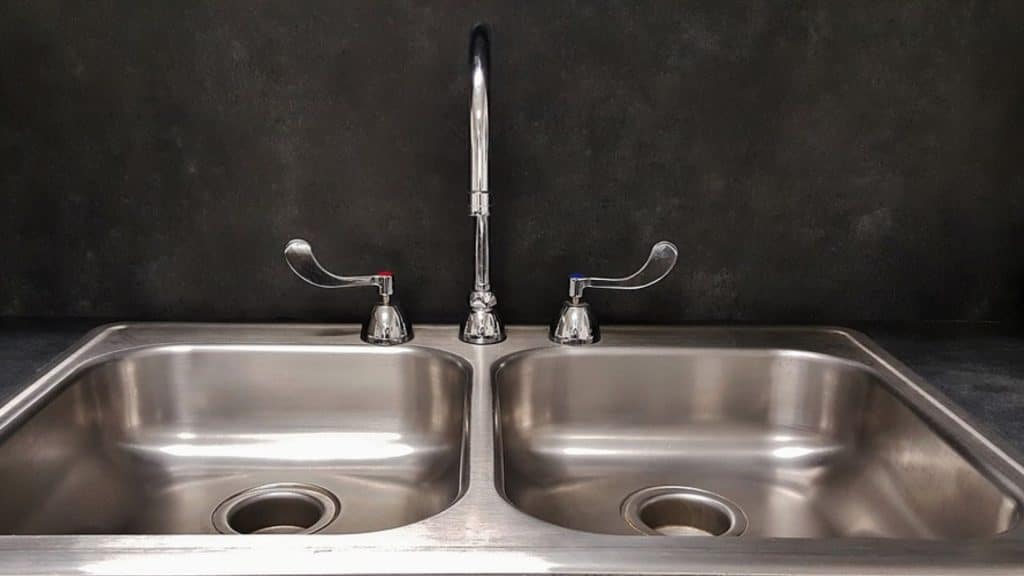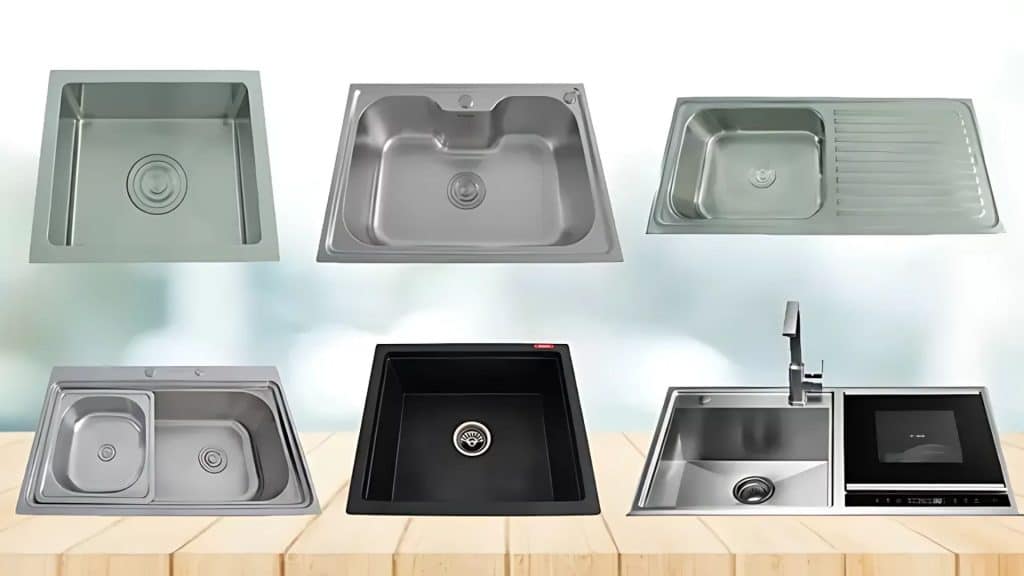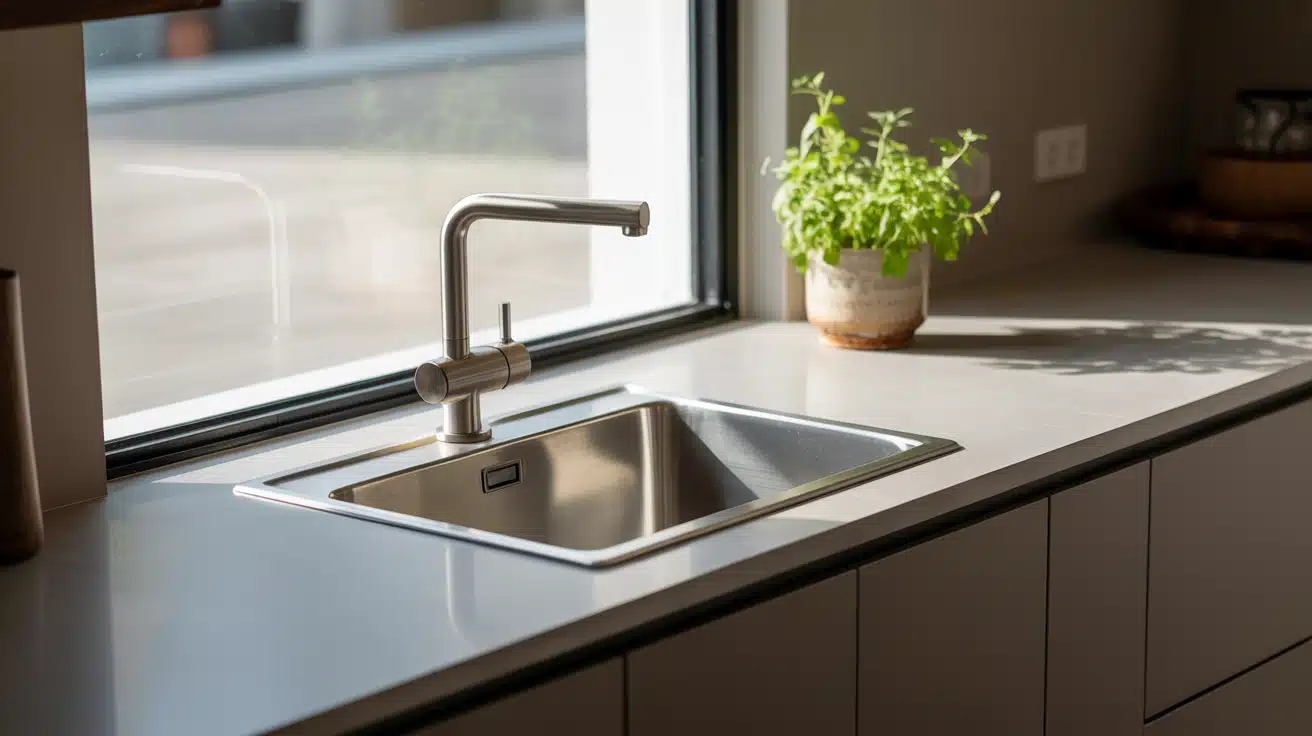When planning a kitchen remodel, preparing a home for sale, or reviewing a property inspection report, you may encounter a surprisingly tricky question: Is a sink considered an appliance?
While it may seem like a small detail, understanding how household features are classified can have a real impact on your budget, paperwork, and home planning decisions.
This guide explains what constitutes an appliance, how sinks are classified, and why this classification is important.
This clarification will help you make informed choices during your next home project, confidently and with fewer surprises.
What Is an Appliance?
An appliance is typically a mechanical or electrical device that performs a specific function in the home.
These devices are typically powered by electricity or gas and designed to perform household tasks such as cooking, cleaning, or food preservation.
Appliances are often movable and are not considered permanent parts of the home’s structure.
Major vs. Minor Appliances
Appliances can generally be categorized into two types:
| Appliance Type | Description | Examples | Key Characteristics |
|---|---|---|---|
| Major Appliances | Large, heavy-duty devices for essential household functions. | Refrigerators, ovens, washing machines, and dryers. | Large, fixed in place, higher cost, durable. |
| Minor Appliances | Smaller, portable devices for routine or convenience tasks. | Toasters, blenders, coffee makers, microwaves. | Compact, portable, affordable, and easy to store. |
Common Examples of Household Appliances
To clarify further, here are examples of items typically recognized as appliances:
Refrigerator – Used to preserve food at safe temperatures.
Dishwasher – A machine designed to clean dishes, glassware, and utensils.
Oven – Used for baking, roasting, or broiling food.
Stove or cooktop – Allows for the preparation of food through direct heat.
Microwave – A small device used to heat or cook food quickly.
Washing machine – Cleans laundry using water and detergent.
Dryer – Dries clothing after washing.
Is a Sink Technically an Appliance?

While sinks are critical parts of any kitchen or bathroom, they are not classified as appliances. Most industry experts and home professionals consider sink fixtures rather than appliances.
Unlike appliances, which are typically powered by electricity or gas and can often be moved or replaced independently, sinks are permanently installed and rely on plumbing systems to function.
They are built into countertops or mounted to walls and work as part of a broader water supply and drainage setup.
Why Sinks Are Not Considered Appliances
Most real estate agents, home inspectors, and contractors agree that:
- Sinks do not use electrical power or gas to operate.
- They are fixed to the structure and not easily detached without altering the home.
- Their primary function is to provide access to water, rather than performing mechanical tasks such as heating, cooling, or washing.
Key Differences Between Fixtures and Appliances
Here’s how plumbing fixtures like sinks differ from traditional appliances:
- Permanent Installation: Fixtures are physically attached to the home (e.g., bolted, cemented, or plumbed in), while many appliances can be unplugged or moved.
- Dependence on Plumbing: Fixtures rely entirely on the home’s plumbing network, unlike appliances that often operate independently with a power source.
- No Internal Mechanical Function: Fixtures don’t contain motors or circuits designed to carry out a function, while appliances often include multiple moving parts.
Understanding this difference ensures clear communication during renovations, real estate deals, or insurance assessments.
How Sinks Are Categorized in Real Estate and Home Design

Sinks are consistently labeled as plumbing fixtures in real estate listings and home design plans. This classification reflects their role as components built into the home and directly connected to the water system.
Real Estate and Inspection Reports
When professionals prepare property listings, home inspection documents, or renovation blueprints, sinks are documented as part of the property’s fixed systems, not as standalone devices. They often appear under categories such as:
- Kitchen Fixtures
- Bathroom Fixtures
- Utility Room Plumbing
This classification ensures that the sink is recognized as a permanent part of the home’s infrastructure; unlike certain portable appliances, it will remain with the property.
Why It Matters in Property Sales and Appraisals
Correctly identifying sinks as plumbing fixtures ensures:
Clear expectations during home inspections: Sinks are evaluated as part of the plumbing system.
Accurate home valuations: Fixtures are included in permanent property value, while removable appliances might not be.
Proper listing and contract details: Prevents confusion or disputes over what stays with the home during a sale.
Sink vs. Appliance: Key Differences
Understanding how sinks differ from appliances helps clarify their role in home systems, affecting everything from repairs to real estate listings.
Here’s a quick comparison to highlight the key distinctions.
| Category | Sink | Appliance |
|---|---|---|
| Functional Role | Provides water for tasks like rinsing and washing; does not perform automated functions. | Performs automated or mechanical tasks such as cooking, cleaning, or cooling. |
| Power Source | Relies solely on plumbing; no electricity or gas required. | Requires electricity or gas to operate. |
| Installation & Maintenance | Permanently installed and connected to plumbing; serviced by plumbers. | May be freestanding or built-in; usually maintained separately. |
Why This Matters for Homeowners
Understanding the distinction between a sink and an appliance isn’t just about terminology; it has real implications for how you manage your home, protect your investment, and plan for future upgrades.
From warranties to insurance policies, classifying these items correctly helps avoid confusion and unexpected costs.
1. Appliance Warranties vs. Fixture Warranties
- Appliances, such as dishwashers and ovens, typically come with manufacturer warranties that cover mechanical failures or electrical issues.
- Fixtures such as sinks, faucets, and drains fall under different policies. They’re typically covered under the plumbing warranty in a home warranty plan or a builder’s guarantee if the home is newly constructed.
- Misunderstanding what’s covered can lead to surprise expenses if something breaks or malfunctions.
2. Insurance and Replacement Costs
- Home insurance often differentiates between appliances and fixtures when processing claims.
- Sinks, being considered permanent parts of the home, are usually included under structural coverage or plumbing-related claims.
- In contrast, appliances might be treated as personal property, especially if they’re not built-in. This affects claim approvals and payout limits during events like water damage or fire.
3. Remodel Planning and Budgeting
- When renovating a kitchen or bathroom, fixtures and appliances are budgeted differently.
- Sinks and faucets often require plumbing adjustments or upgrades.
- Appliances may require dedicated electrical outlets or venting systems.
- Understanding these categories helps with accurate pricing, contractor coordination, and timelines.
Conclusion: The Final Word
While sinks are essential in kitchens and bathrooms, they are not classified as appliances.
Appliances are powered devices that perform automated tasks like cooking or cleaning, while sinks function as plumbing fixtures, providing access to water but without mechanical operation.
Understanding this distinction is important for warranties, insurance coverage, and remodel planning.
So, is a sink an appliance? No, it’s a fixture, not an appliance.
Do you have questions about fixtures vs. appliances in your home? Post them in the comments below, we’re here to help you make smarter, stress-free home decisions!


